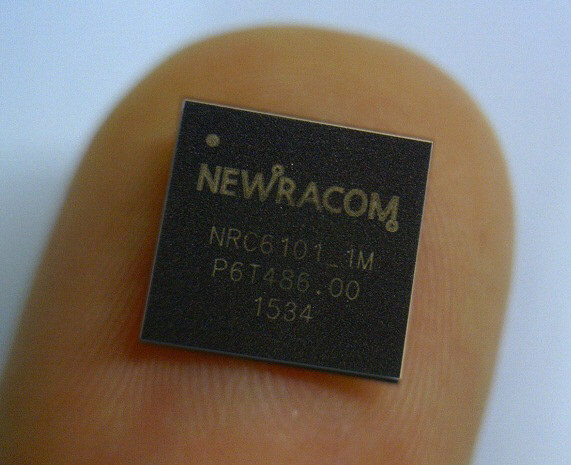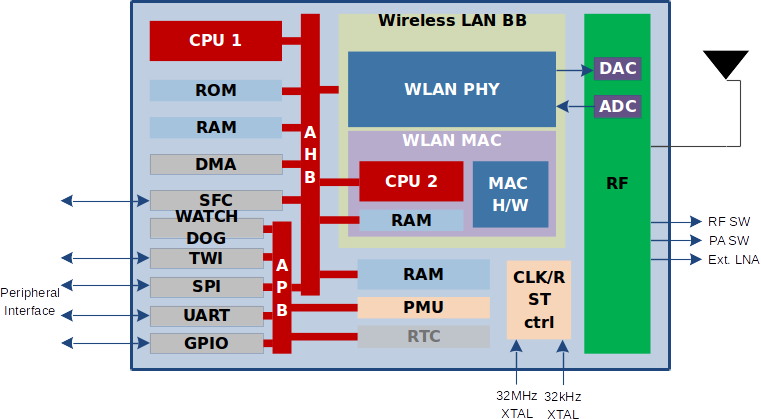802.11ah is a new WiFi standard operating in the 900 MHz range that targets low power & long range connectivity, as required by many IoT & M2M applications. According to this low power WAN standards comparison table, 802.11ah also supports up 1km range outdoor, 150 Kbps to 346 Mbps transfer rates, up 8191 clients per access points, and a 2016 launch is planned. However, I had not seen any implementations based on the new standard, except a demonstration by Antcor on a DSP in 2014. A Korean startup, Newracom, may however soon launch the first 802.11ah chip with NRC6101 SoC.

I was tipped about this new solution via a Korean website, where I got the picture above from, but there’s no information about NRC6101 on the web, except for a small mention on Wikidevi.com redirecting to the product page, where NRC6101 name is not even mentioned, but with some specifications for a 802.11ah SoC:
- IEEE802.11ah
- Single stream up to 2.167Mbps data rate
- Data symbol block-wise repeated for increasing the reliability
- Supports 1 and 2MHz channel bandwidth with optional Short Guard interval
- Support TWT (Target Wake Time) function for power saving
- SoC
- Multi cores SoC system with dual ARM processors
- Low Power processor (Main CPU) for application software
- Low Power processor (WLAN CPU) for WLAN software
- BUS System supports 2-Layer and Full Matrix AHB
- Low Power Design
- Multi cores SoC system with dual ARM processors
- Benefits – Wide range, Low power Wi-Fi solution is available for not only SoC but also reusable IP
- Physical Interfaces / Peripheral – I2C, HSUART, UART, SSP, SPI

So they’ve adopted a dual core micro-controller structure, with one core dedicated to WiFi, and the other used by the application software, similarly to what has been done for the upcoming Espressif ESP32. The main target applications include smart grid and extending “Wi-Fi” coverage, but the solution could also be used for remote controls, home/office automation devices, or industrial automation.
I could not find further details with regards to availability, pricing, and eventual development kits. Newracom will showcase their solutions at IP SoC 2015 conference on December 2-3 in Grenoble, France.
Thanks to Nanik for the tip.

Jean-Luc started CNX Software in 2010 as a part-time endeavor, before quitting his job as a software engineering manager, and starting to write daily news, and reviews full time later in 2011.
Support CNX Software! Donate via cryptocurrencies, become a Patron on Patreon, or purchase goods on Amazon or Aliexpress




